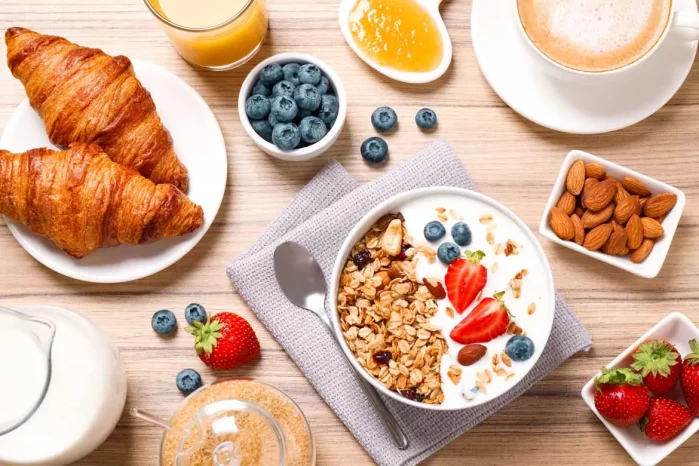In the fast-paced world we live in, breakfast often takes a back seat or becomes a rushed affair. However, the importance of a nutritious breakfast cannot be overstated. It jumpstarts your metabolism, provides essential nutrients for the day ahead, and sets the tone for healthier eating habits. For those aiming to shed a few pounds or simply maintain a healthy weight, opting for a low-calorie breakfast can be a strategic choice. Let’s delve into the world of low-calorie breakfast options and explore how they can fuel your day while keeping your calorie count in check.
Understanding the Importance of Breakfast
Breakfast is rightly hailed as the most important meal of the day, and for good reason. After a night of fasting, your body needs a replenishing dose of nutrients to kickstart your metabolism and provide energy for the day ahead. Studies have shown that breakfast eaters tend to have better overall health, including improved concentration, better memory, and lower risk of chronic diseases like diabetes and heart disease.
The Pitfalls of Skipping Breakfast
While it might be tempting to skip breakfast altogether, especially for those aiming to cut calories, this habit can have adverse effects on your health and weight loss goals. Skipping breakfast often leads to overeating later in the day, as you’re more likely to reach for high-calorie snacks or larger portions at subsequent meals. Moreover, skipping breakfast can slow down your metabolism, making it harder to burn calories efficiently.
The Power of Low-Calorie Breakfasts
Opting for a low-calorie breakfast allows you to fuel your body without consuming excessive calories. By choosing nutrient-dense foods that are low in calories, you can satisfy your hunger and provide your body with essential vitamins and minerals without sabotaging your weight loss efforts. Additionally, low-calorie breakfasts can help you stay within your daily calorie budget, making it easier to achieve and maintain a healthy weight.
Key Components of a Low-Calorie Breakfast
When planning a low-calorie breakfast, it’s essential to focus on foods that are high in nutrients but low in calories. Here are some key components to include:
1. Lean Proteins
Protein is essential for building and repairing tissues, maintaining muscle mass, and keeping you feeling full and satisfied. Opt for lean sources of protein such as eggs, Greek yogurt, cottage cheese, tofu, or turkey bacon. These options provide a protein punch without loading you up on calories.
2. Fiber-Rich Foods
Fiber not only aids in digestion but also helps keep you feeling full for longer, preventing overeating later in the day. Incorporate fiber-rich foods such as whole grains, fruits, vegetables, and nuts into your breakfast routine. Oatmeal, whole grain toast, berries, and avocado are excellent choices that provide a good balance of fiber and nutrients.
3. Healthy Fats
While it’s essential to watch your fat intake, incorporating healthy fats into your breakfast can help keep you satisfied and provide essential nutrients. Avocado, nuts, seeds, and olive oil are excellent sources of healthy fats that can be added to your breakfast in moderation. Spread avocado on whole grain toast, sprinkle nuts and seeds over yogurt or oatmeal, or drizzle olive oil over scrambled eggs for a nutritious boost.
4. Portion Control
Even when choosing low-calorie foods, portion control is key to managing your calorie intake. Be mindful of serving sizes and avoid overloading your plate with large portions. Eating slowly and savoring each bite can help you feel satisfied with smaller portions.
5. Hydration
Don’t forget to hydrate! Starting your day with a glass of water or herbal tea can help kickstart your metabolism and keep you hydrated throughout the day. Avoid sugary drinks like juice or soda, which can add unnecessary calories without providing much nutritional value.
Sample Low-Calorie Breakfast Ideas
Here are some delicious and nutritious low-calorie breakfast ideas to inspire your morning routine:
- Vegetable Omelette: Whip up a fluffy omelette with diced vegetables such as bell peppers, onions, spinach, and tomatoes. Top with a sprinkle of low-fat cheese for added flavor.
- Greek Yogurt Parfait: Layer Greek yogurt with fresh berries, granola, and a drizzle of honey for a satisfying and nutritious breakfast treat.
- Smoothie Bowl: Blend together your favorite fruits, leafy greens, and a scoop of protein powder for a refreshing and filling breakfast bowl. Top with nuts, seeds, and a dollop of Greek yogurt for added crunch and creaminess.
- Whole Grain Toast with Avocado: Toast a slice of whole grain bread and top with mashed avocado, sliced tomatoes, and a sprinkle of salt and pepper for a simple yet satisfying breakfast.
- Chia Seed Pudding: Mix chia seeds with almond milk and a touch of sweetener, then let it sit overnight to thicken. In the morning, top with fresh fruit and a drizzle of nut butter for a nutritious and filling breakfast option.
Conclusion
A low-calorie breakfast doesn’t have to mean sacrificing flavor or satisfaction. By choosing nutrient-dense foods and watching your portion sizes, you can enjoy a delicious and filling breakfast while keeping your calorie intake in check. Incorporate these tips and sample breakfast ideas into your morning routine to kickstart your day on a healthy note and set yourself up for success in reaching your weight loss goals.
Related Topics:
Which Is the Best Weight Gain Powder


























